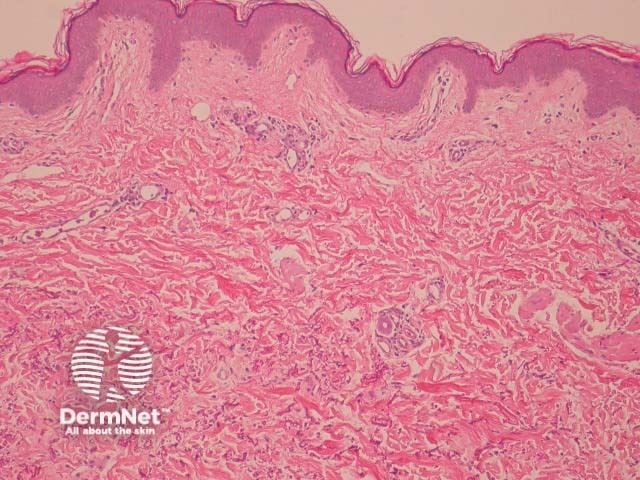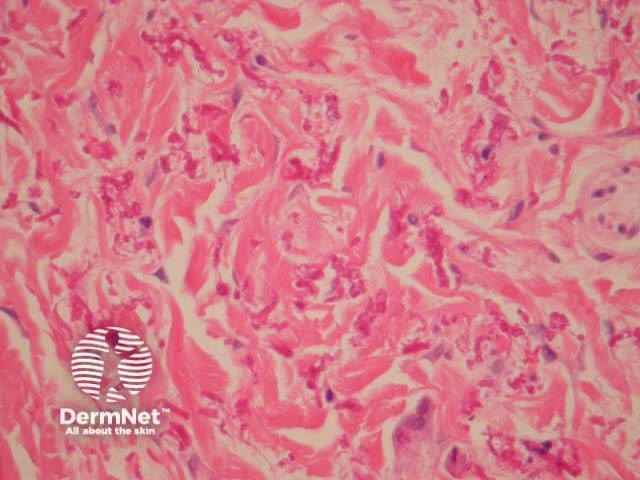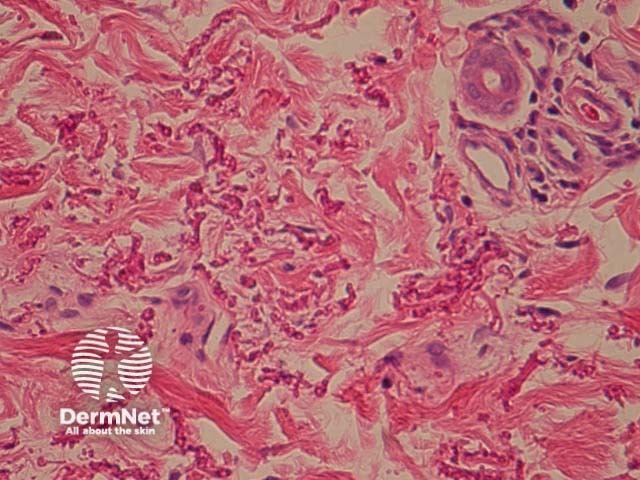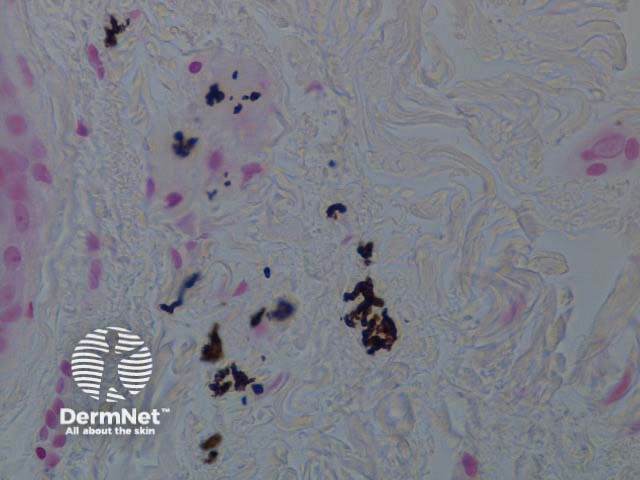Main menu
Common skin conditions

NEWS
Join DermNet PRO
Read more
Quick links
Pseudoxanthoma elasticum pathology — extra information
Genetic Diagnosis and testing Connective tissue diseases
Pseudoxanthoma elasticum pathology
Author: Assoc Prof Patrick Emanuel, Dermatopathologist, Auckland, New Zealand. January 2015.
Pseudoxanthoma elasticum (PXE) is a rare connective tissue disorder involving fragmentation and mineralisation of elastic fibres, predominantly in the skin, eyes, and cardiovascular system. PXE has been associated with more than 110 different mutations in the ABCC6 gene.
Histology of pseudoxanthoma elasticum
In PXE, elastic fibres of the reticular dermis are short and fragmented. The abnormal fibres are basophilic and evident on H-E sections. Rarely, the abnormal fibres elicit a granulomatous reaction (figures 1, 2, 3).

Figure 1

Figure 2

Figure 3

Figure 4
Special studies for pseudoxanthoma elasticum
Von Kossa stain shows fragmented elastic fibres coated in calcium (figure 4). Calcium stain may highlight calcium deposition.
Differential diagnosis of pseudoxanthoma elasticum
Normal skin – Without careful examination of the reticular dermis on high power the elastic fibre abnormalities may be overlooked.
PXE-like elastic fibres may be seen rarely in a diverse range of other dermal pathologies. Correlation with clinical features and with other histopathologic features is helpful.
Papillary dermal elastolysis (fibroelastotic papules) – This entity resembles PXE clinically but histologically shows an absence/reduction of elastic fibres in the papillary dermis.
References
- Weedon's Skin Pathology (Third edition, 2010). David Weedon
- Yoo JY1, Blum RR, Singer GK, Stern DK, Emanuel PO et al. A randomized controlled trial of oral phosphate binders in the treatment of pseudoxanthoma elasticum. J Am Acad Dermatol. 2011 Aug;65(2):341–8. doi: 10.1016/j.jaad.2010.05.023. Epub 2011 Apr 15. PubMed
